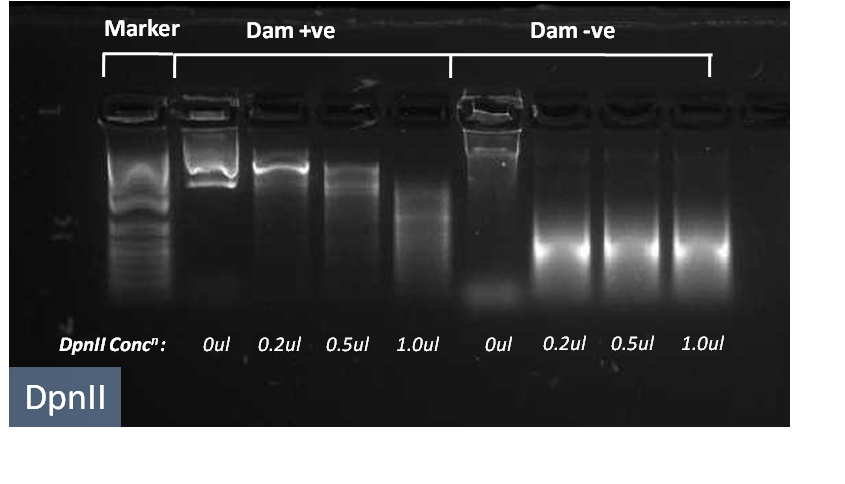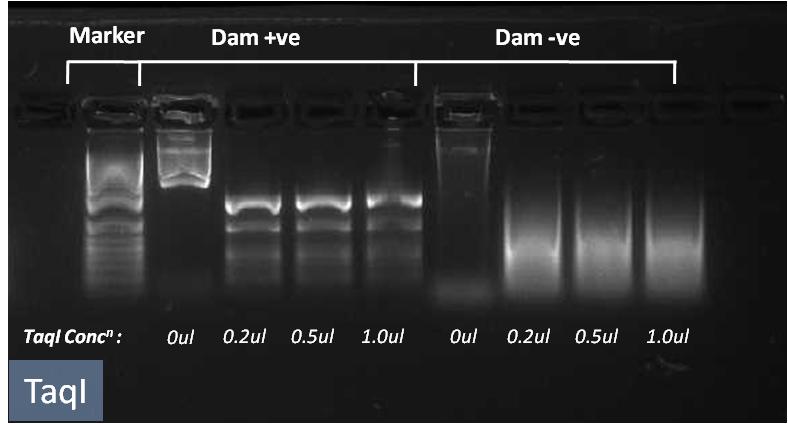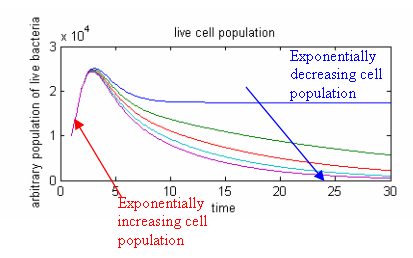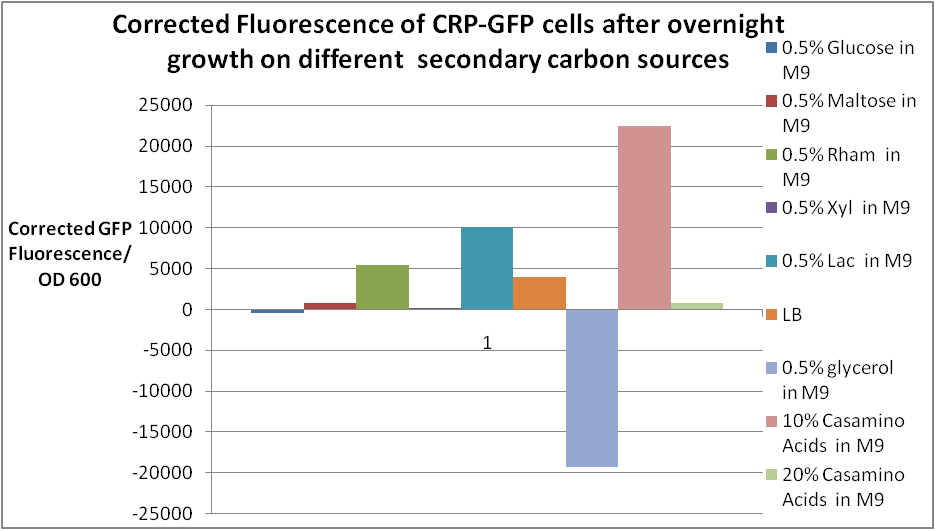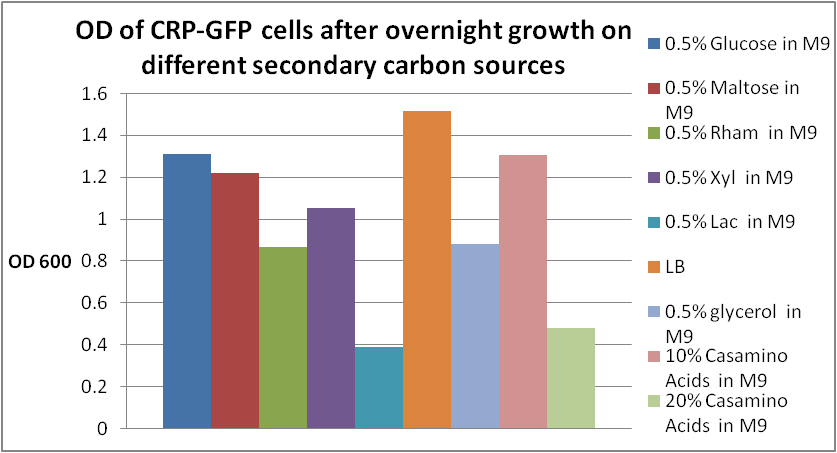Team:Imperial College London/Major results
From 2009.igem.org

Contents |
Major Results
This page contains highlights of our major results and simulations. It is by no means complete. However, more results will be presented at the jamboree.
Module 2 - Encapsulation
Wet lab experiments were performed to investigate growth of E. Coli cells under environments of different pH.
Module 3 - Genome Deletion
- The wet lab has also investigated the effects of restriction enzymes on cell population. Positive results were achieved.
The Dam negative strains are fully cleaved at all different concentrations of restriction enzyme. This produces the 'smear' that can be seen, as the DNA fragments are all of varying, but short lengths
From these results, we have shown that restriction enzymes can cleave Dam negative strains, hence killing Dam negative cells. This also proves Dam positive strains are protected again genomic deletion.
- Furthermore, the dry lab has provided a model on cell population under the production of restriction enzymes.
We have shown that an increase in restriction enzyme concentration will decrease total cell population, under the abscence Dam protection.
Module Integration - Autoinduction
- Experiments were performed on the CRP promoter. From this experiment, we are able to choose the best media for the optimal growth of cells.
Corrected fluorescence of glucose is almost negligible. From this, we have proved the theory that glucose represses the PcstA promoter strongly.
Also, 10% Casamino Acids in M9 shows the highest corrected fluorescence.
OD600 at 10% Casamino Acids in M9 is high, indicating good cell growth.
diauxic growth
Module Integration - Thermoinduction
hvd gfp
References
[1]Physica A: Statistical and Theoretical Physics, Vol. 188, No. 1-3. (1 September 1992), pp. 404-425. A rigorous derivation of the chemical master Equation
 "
"
